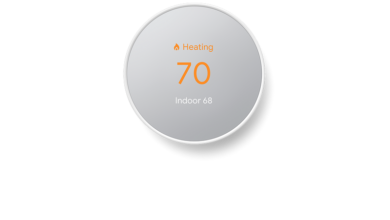Heat pumps are a big upgrade for customers. And an even bigger opportunity for your business.

The trend toward electrification in the HVAC industry is growing fast. And the Inflation Reduction Act of 2022 provides significant tax credits and rebates for homeowners who upgrade to energy-efficient heat pumps. That means they could be more important to your business than ever before in 2023 and beyond.
The good news is, Nest thermostats are designed to work with most heat pumps. And with updated intelligent features, they can make heat pumps work even better for your customers.1
But I thought Nest thermostats weren’t compatible with heat pumps.
That’s a common misunderstanding. Nest thermostats do work with standard 24V controlled heat pumps.2
How do Nest thermostats help customers save energy?
Nest thermostats have improved intelligent features built in to make the heat pump work even more efficiently.1 They use information from a recent heating or cooling cycle – including the heat pump’s runtime, data from local weather forecasts, and the temperature in the home – to actively adjust how much auxiliary heat is used. For example, if the system heats to the customer’s preferred temperature quickly, the auxiliary lockout temperature may decrease.
Nest thermostats help prevent overheating the home by turning off expensive auxiliary heat before reaching the target temperature, so it’s only used when it’s needed. That keeps the temperature just right, while maximizing savings for your customers.
How can my customers balance comfort and energy savings with a Nest thermostat?
With Heat Pump Balance, your customers can choose to prioritize comfort, savings, or a mix of both. Nest thermostats can actively adjust how much auxiliary heat is used based on what’s prioritized.
For example, choosing Max Comfort generally results in a higher auxiliary lockout temperature, so their Nest thermostat will try to get their home to the temperature they want, even if it means using expensive auxiliary heat.
And with Max Savings, the thermostat will try to use auxiliary heat as little as possible to increase their savings. Customers can easily change the option at any time.
How do Nest thermostats protect heat pumps?
To protect your customer’s heat pump, you can adjust the compressor lockout temperature to switch to auxiliary heat when the outdoor temperature is too hot or too cold.
And with HVAC monitoring, built into all Nest thermostats, customers can get notified if their heat pump isn’t working properly.3 The alert uses your Nest Pro ID to help your customers contact you, right from the device they’re already using.4
I’d rather customize the heat pump controls myself.
No problem. It’s easy to customize them for your customers. You can always turn off Heat Pump Balance and manually set the auxiliary lockout and compressor lockout temperatures. Nest thermostats can still use other smart features like Early-On and Cool to Dry, which help your customers stay comfortable and in control.
Deliver even more energy savings to customers – and open new revenue streams for your business – when you pair heat pumps with Nest thermostats. Learn more at g.co/nestpro.
LEGAL
1Not available on the 1st or 2nd generation Nest Learning Thermostat.
2Nest thermostats are not compatible with heat pumps that require a special closed protocol communicating thermostat.
3List of eligible HVAC systems is available at g.co/nest/hvac-monitoring. Alerts can notify users of a potential issue with an eligible HVAC system. They’re meant to provide helpful information, not an endorsement, representation, or warranty of any kind about the health of an HVAC system. Alerts aren’t intended to replace a diagnosis by a qualified HVAC professional.
4To start receiving HVAC repair requests, you must enter your Nest Pro ID at installation.

